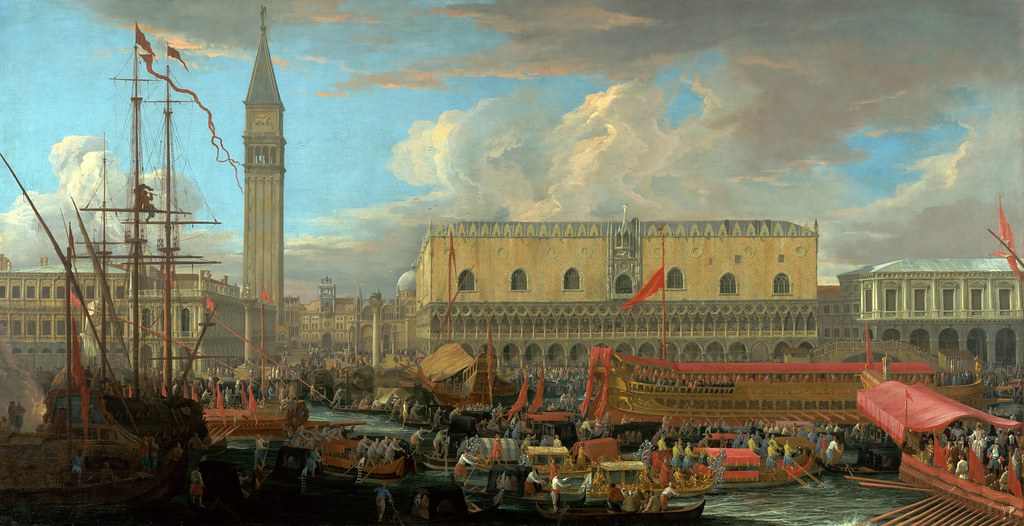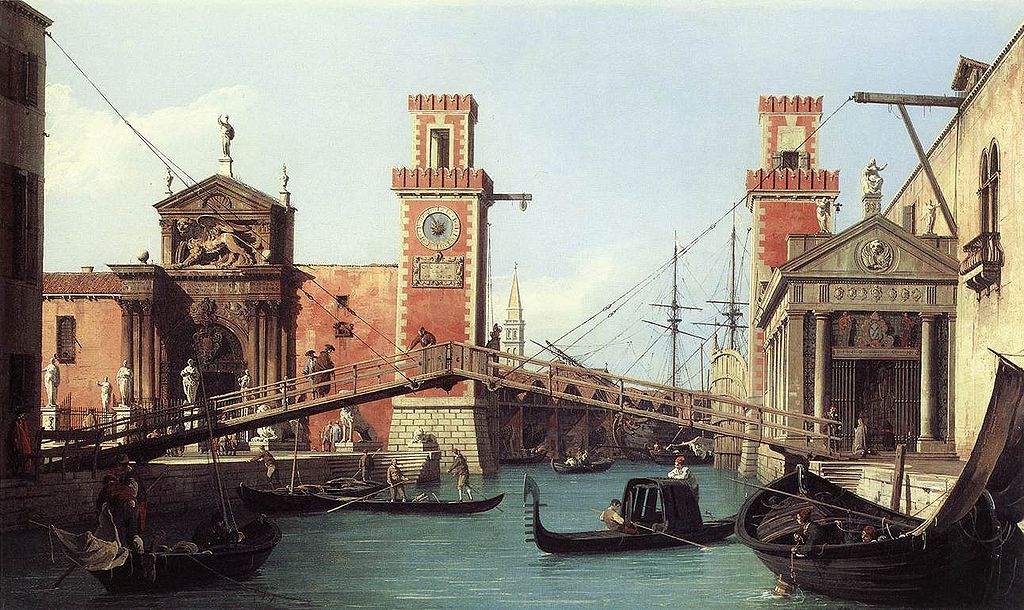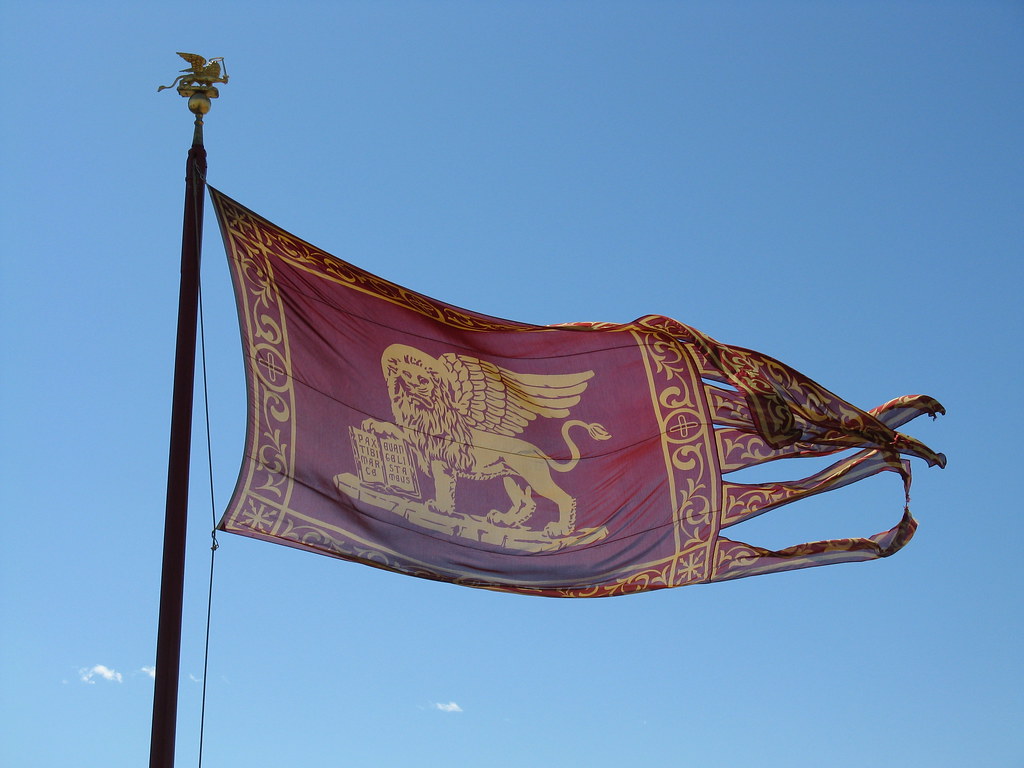Venice
We won't go over the entire history of Venice, as it is lengthy and too interesting to cover in such a short prompt. However, it has been known as the city of pleasures for many centuries, festivals like Carnivale originating there just before Lent. It is also a place full of courtesans, new money, and some of the greatest artists and architects of the medieval age. Venice was the literal middle-man between the riches and mysteries of the East and mainland Europe.
FUN FACT! At one point, the courtesans and sex workers of the city started their own guild to protect employees, prices, and the spread of disease within the city.
If you want to know more, below are specific times when Syres has either been to Venice or is exposed to Venetian traders/merchants.
11th Century
1047-1095 Syres is in the retinue of the Holy Roman Empire when representatives from the growing Venetian Republic met them in Verona during the council to decide the Pope and other ecclesiastical and Empirical matters. A strong friendship was created that day between the Pope, who was looking to go east, and the Doge of Venice. This all equaled out to Venice's domination of the Adriatic, and much of the trade routes between Byzantium, The Levant, and N. Africa into Europe. Syres does not go to Venice itself until the 1080s when he and his lover Matilda are fighting a war for the expansion of Tuscan influence over central Italy and the papacy itself.12th Century
1121-1144 After the First Crusade, Venetians control the trade between The Kingdom of Jerusalem, Fatimid Cairo, and Europe. It is at this time that Syres befriends a Venetian trader who allows him to employ his vessel, and two others, to bring Egyptian grain, granite, and gold to Crusader-controlled Jaffa and Aachen. Syres knowing Arabic, Coptic, and Latin as well as a Tuscan dialect of Italian allows him to gain a writ or permission to trade and sell goods in the holy land. And since there were few on good terms with the Fatimids, Syres monopolized on his unique position and made his Venetian friends, and himself, a lot of coin. With this money, and his experience sailing on a ship, he plans for a trip east, into the unknown and mythical lands of India. View of the Arsenal painting - 18th century13th Century
1228 - 1239 Syres goes with HRE Frederick II to Venice to discuss a sixth, and ultimately the final, crusade. The city is prosperous and growing larger by the day, as the great Venetian fleet. Syres enjoys a leisurely time in the city of pleasures until Frederick and his retinue are ready to go to the holy city. They set off for the Levant and to Syres' surprise, no fighting takes place. The diplomatic maneuvering of the Holy Roman Emperor and King of Sicily, Frederick II, resulted in the Kingdom of Jerusalem regaining some control over Jerusalem for much of the ensuing fifteen years (1229–1239, 1241–1244) as well as over other areas of the Holy Land. . Frederick hoped that a token show of force, a threatening march down the coast, would be enough to convince al-Kamil, the sultan of Egypt, to honor a proposed agreement that had been negotiated some years earlier, prior to the death of al-Muazzam, the governor of Damascus. The Egyptian sultan, occupied with a siege in Damascus, Syria against his nephew An-Nasir Dawud, agreed to cede Jerusalem to the Franks, along with a narrow corridor to the coast. In addition, Frederick received Nazareth, Sidon, Jaffa, and Bethlehem. Other lordships may have been returned to Christian control, but sources disagree. It was, however, a treaty of compromise. The Muslims retained control over the Temple Mount area of Jerusalem, the al-Aqsa Mosque, and the Dome of the Rock. The Transjordan castles stayed in Ayyubid hands, and Arab sources suggest that Frederick was not permitted to restore Jerusalem's fortifications, although the Crusaders did in fact restore Jerusalem's defensive walls. The treaty was concluded on 18 February 1229, and also involved a 10-year truce. 1266 Syres is rescued by a Venetian ship off the coast of Gibraltar and is taken back to Venice to recuperate. This is where the story ends, as the story starts out with him speaking to a young Venetian boy who is the son and nephew of the family whose ship rescued Syres. The ending comes full circle with the prologue at the very beginning of Book I.Timeline
- 828 - Mark the Evangelist designated patron saint of the city.
- 836 - Doge's Chapel built.
- 902 - St Mark's Campanile construction begins.
- 1094 - St Mark's Basilica consecrated.
- 1097 - Market established on Rialto.
- 1104 - Arsenal (Ship Yard) was built
- 1131 - The church of San Clemente is the first established settlement on the Isola di San Clemente.
- 1157 - Bank established.
- 1202 - Fourth Crusade embarks from Venice.
- 1228 - Fondaco dei Tedeschi built.
- 1264 - Bridge built across Grand Canal.
Type
Capital
Doge's Of Venice
- Domenico Contarini (1043–1071)
- Domenico Selvo (1071–1084) deposed peacefully to a monastery because of naval defeat, died three years later
- Vitale Faliero (1084–1096)
- Vitale I Michiel (1096–1102)
- Ordelafo Faliero (1102–1117)
- Domenico Michele (1117–1130)
- Pietro Polani (1130–1148)
- Domenico Morosini (1148–1156)
- Vital II Michele (1156–1172)
- Sebastiano Ziani (1172–1178)
- Orio Mastropiero (1178–1192)
- Enrico Dandolo (1192–1205)
- Pietro Ziani (1205–1229)
- Jacopo Tiepolo (1229–1249)
- Marino Morosini (1249–1252)
- Reniero Zeno (1252–1268)
Remove these ads. Join the Worldbuilders Guild












Comments